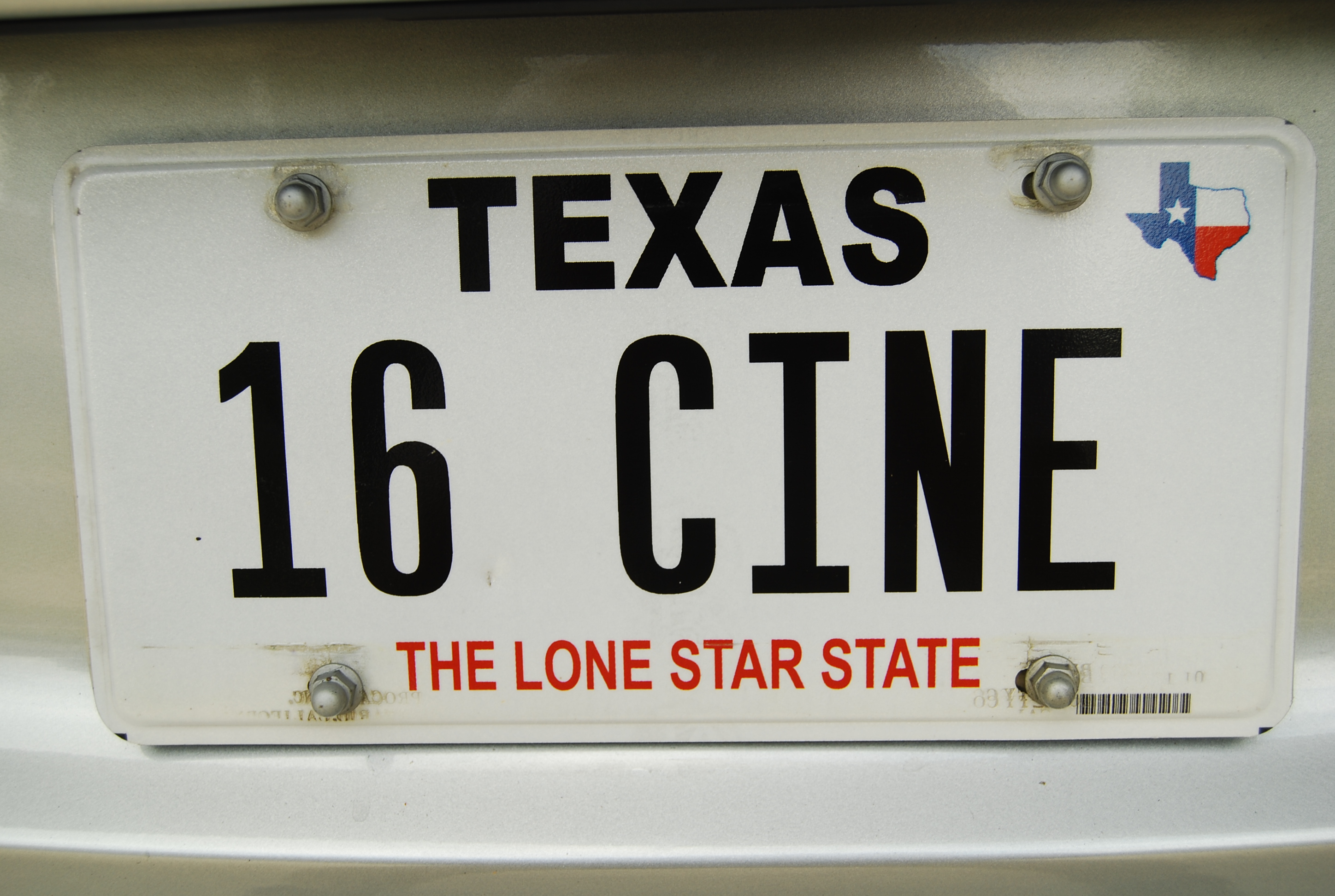Professor O. B. Fuscate ©
By S. Martin Shelton
Professor Fuscate’s strides are long and quick. He’s late for his lecture “Deconstructing Dashiell Hammett’s novel The Maltese Falcon.” To save a few steps, he cuts through the parking lot. His mind is focused sharply on telling his students what Hammett meant in the scene where Caspar Gutman says to Sam Spade, “Yes sir, we were. But we were talking then. This is actual money, genuine coin of the realm, sir. With a dollar of this you can buy more that ten dollars of talk.” A bright symbol catches the corner of his eye. He stops and spots the personalized license plate “16 CINE” on a current model Volvo sedan.
His mind tries to decode the significance of this symbol. No doubt, it’s an icon that reveals the automobile’s owner’s psyche: his needs to proclaim to the world through this coded message that it is he. But, who is he? And what is the owner’s message? The conundrum piques the professor’s professional pride to the degree that he must solve this riddle. Puzzled deeply, he eschews his class and resolves to deconstruct this arcane symbol.
Professor Fuscate applies his keen deductive ability to devise the owner’s meaning. He immediately rationalizes that the owner of this new Volvo is astute, wealthy, socially liberal, well educated, and environmental aware. Why does the owner need to proclaim this arcane two-symbol message to the world? A boost to his ego? A protection notice? A proclamation of import? Or perhaps just a will-o’-the-wisp—but he thinks not. There is a serious message here.
First, he tackles the symbol “16.” He notes that this number has no dimension: inch, volt, light-year, or furlong for examples. Nonetheless, based on the evidence and using his patented deconstruction techniques, he concluded that “16” is either a count of something or an icon that represents something known only to the owner and his cadre of cognoscenti.
He’s perplexed with “CINE.” He first thought is that it is an anagram in some foreign language. On reflection, he discards this idea and deconstructs this symbol as code for “SIN” and the “E” stands for “Extraordinary.” With this part of the sign solved, he concludes that the owner is proclaiming his confession for sixteen major sins—all left unsaid.
Standing behind Professor Fuscate is a scruffy young fellow smoking a joint. He’s wears torn jeans, wrinkled shirt, and running shoes that should have been discarded last year. He has long, shaggy hair, an unkempt beard, and emits the putrid odor of a long, unwashed body. Surprised that the professor is examining his license plate, he exhales a cloud of voluminous and odiferous smoke toward the professor. He asks, “Hey man, ‘wacha doin’ with my automobile?”
The professor coughs a couple of times and addresses the intruder, “I have deconstructed your license plate’s symbol. He waves away some of the lingering smoke. “Pray tell young man, what are your sixteen-sins that you’ve proclaimed so loudly in code on you Volvo?”
Befuddled by this untoward remark, the fellow proclaims. “Ain’t got no sins. And if I did, I sure aint gonna tell you or nobody else.”
“But you license plate sends the message of your sins loud and clear. Do not be ashamed. What are your discretions, if I may be so bold?”
“Professor, you ain’t bold. You got a mixed up mind.” He tossed his joint on the ground and exhales a volume of gray smoke that engulfs the professor. “I’m a cinema student and my personalized plate tells the world that I’m studying 16mm filmmaking.
“Quite so. Quite so. Just as I had deconstructed.”
If you enjoyed my short story please read Aviators, Adventurers, and Assassins, a conglomeration of 20th Century novellas, short stories, and flash fiction quips, assembled in no particular order, are heroes, blackguards, lovers, gallants, adulterers, wayfarers, fanatics, mercenaries, sportsmen, pioneers, and murderers—just the regular assemblage of ordinary folks doing extraordinary things. Some of the characters are real (usually disguised in a nom de plume), some are fiction, some of the stories are based on real incidents, and some are figments of my imagination. Nonetheless, take none seriously—even though your empathy may be intense.

Martin, is this you from Alpine two years ago? If it is, you may remember me. We shared a small glass of some delicious inebriant whose name I don’t remember. We also went on that wonderful expedition out to the old mine in West Texas. I’m sitting here at my desk looking at a picture you sent me of us sitting in front of a ruined mine building.
If it is you, tell me how you are doing!
Best